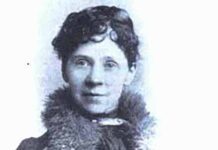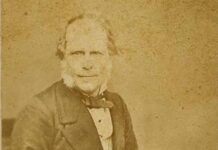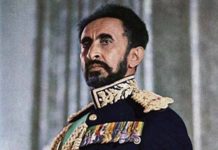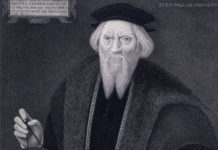Many people think of the legend behind the man via cartoons and popular myths. But, who is the Red Baron? Where does the legend originate?
Popular culture paints “The Red Baron” in many colors, a legend that came across the screen in the well-known holiday movies of the Peanuts Gang (battling the dog, Snoopy) by Charles M. Schulz. Recently portrayed in a movie made in Germany, the main character starring Matthias Schweighöfer, “The Red Baron” himself has spawned his nickname for video games, pizzas, etc., but the real man has evaded us.
Peter Kilduff, the author of many books behind this legend, has shed light on the man that created a culture. His best-selling book, published in 1993, shows us a name, a life and the years that cultivated the legend: Manfred von Richthofen, the highest-scoring (eighty “victories”) and well-known ace of the First World War. In the first war of the twentieth century, where modern technology was finally coming into play, Richthofen rode across the struggle – from older ways to newer – and created, within a nation, the belief in heroes again and strengthened not only the men under his command, but also their will to fight for the Fatherland, for Germany, and for their monarch, the Kaiser Wilhelm II.
Richthofen’s Early Military Life
While Richthofen never set himself up to be a hero for Germany, he most certainly had grown to love and serve his country. Born in 1892 in what is known as Poland today (Breslau, in the county of Silesia), Richthofen was a natural hunter, nurtured into him by his father, Major Albrecht Phillip Karl Julius Freiherr (Baron or “Free Lord”) von Richthofen. The eldest son, but the second child of the Richthofen family (he had an elder sister, Ilse, and two younger brothers, Lothar and Bolko), Manfred was expected to become a military officer.
Sent to Wahlstatt (a military academy for cadets near Berlin) at the age of eleven, Richthofen learned the foundation of which his career held on to. Without taking his studies quite seriously, the eldest Richthofen son had barely passed his classes, but excelled, instead, in sports, especially gymnastics and, of course, hunting. Richthofen was also a person to never give up challenges and to play pranks. A story even tells of the young child climbing the steep roof of the cadet school, with a friend, to tie a handkerchief to the top before sliding back down to the ground.
Graduation from the cadet school, at the age of seventeen (1909), meant more freedom and advancement in his military career. By 1912, after studying at a war academy, Richthofen was awarded an officer’s rank and assigned to a cavalry regiment, 1 Uhlans, cavalry trained in light combat and scouting missions. He remained with the unit faithfully, ignoring the warnings about war. He was sure there was to be no war, at least for the time being. At a dinner party on the eve of disaster two years after becoming an officer, Richthofen was reassured that there was to be no war, although it had been looming in Europe for years.
On August 2, 1914, 1 Uhlans was shocked to hear about the new world war, in Europe, and was shipped to the Eastern Front, to Russia. Manfred von Richthofen’s rise to fame was to begin with this war, later called “The War to End All Wars”.
“The Great War”
For the first year of the war, Richthofen worked with his cavalry unit, fighting the Cossacks of Russia (once, holding the local parish priest hostage when looking for Russian spies). However, it was soon found out that the cavalry was an out-dated military branch. The First World War was well-known for its development of the first air services and the use of mustard gas, machine guns and trenches, although trenches were first used in the American Civil War.
In 1915, Richthofen was transferred to the Western Front (against France and Great Britain), used for the Signal Corps, which had him crawling from one trench to the next, delivering messages and taking telephone messages. Eventually, he applied for a transfer to the German Air Service and it was granted. By June of 1915, Richthofen was taking classes in aviation and learning how to become an observer.
After learning of the mechanics of playing and about airplane camouflage and recognition, bomb-dropping, map reading and drawing, troop and artillery spotting, etc., Richthofen was assigned to work, at the Eastern Front, with Lieutenant Georg Zeumer, a daring pilot already dying from tuberculosis and diabetes. After many disagreements about how to approach the enemy in their two-seater, Richthofen befriended Count Holck and the two started to fly together.
After his first solo flight in a biplane in October, 1915, Richthofen was awarded his pilot’s badge. Studying at a pilot’s school near Berlin, Richthofen was then assigned back to the Western Front. Over the next year, he improved his flying skills, impressing Oswald Boelcke, the famous pilot of Germany. In 1916, Boelcke was assigned to create the first Jagdstaffel (or Jasta), a fighter squadron. By September of that year, the hero of Germany had handpicked his new students, including Richthofen, and created the first “hunting squadron”.
After Boelcke’s accidental death the next month, Richthofen continued to prove, time and again, that his skills as a pilot were exceptional. By early 1917, the former cavalry officer was awarded the Pour le Mértie, one of the highest honor Germany gave to its military personal, but the most-wanted. He was also given the command of his own squadron, Jasta 11: the start of his career as a fighter pilot and the beginning of his fame.








